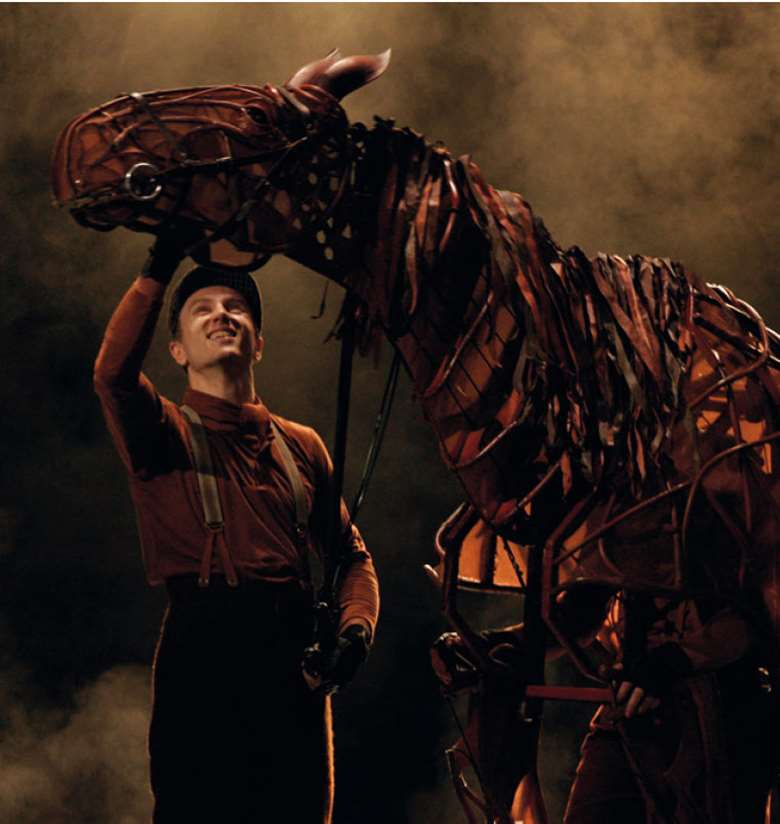Practitioner focus: Marianne Elliott
Lucy Miller
Tuesday, September 1, 2020
Marianne Elliot, a suggested set practitioner on the Eduqas syllabus, is a highly acclaimed and multi-award winning contemporary British theatre director, probably best known for her National Theatre productions, War Horse (2007), The Curious Incident of the Dog in the Nighttime (2012) and Angels in America (2018). She has recently directed a groundbreaking performance of Stephen Sondheim's Company, which saw a female actor in the (usually male) lead role.

EVA RINALDI/CC BY-SA
It's difficult to pin Elliott down to a single style or approach; the plays she has directed vary widely in theme and content. However, they owe their universal appeal to the integrity with which she handles their emotional and often challenging subject matter. She collaborates closely with her team of choreographers, lighting and sound designers, giving her productions a distinctively experimental feel. Her clever use of ensemble is complemented by sparse staging and the use of symbolic design elements.
At the start of her exhaustive preparation process, she completes detailed interrogation of the text, reading it many times and from each character's perspective. Then she storyboards it with a designer so that each moment is a crafted visual delicacy. She works with her actors to foster an environment of trust; together they experiment with each line, examine the characters’ objectives, subtext and what she calls the ‘subconscious desires of the characters’.
Key features
Approach:
- Intensive preparation and research period
- Actor input and collaboration
- Experimentation
- Close collaboration with design team
- Emphasis on character objectives, psychology and subtext.
Outcomes:
- Sparse, multi-locational staging
- Clever, symbolic use of design, for example the grid to represent Christopher's brain in Curious
- Use of projection to enhance and comment on the action
- Multi-role play
- Emphasis on physicality
- Ensemble feel or choral elements.
Introducing your students to Elliott's work
Exercise 1: Research
Divide students into small groups and give each group a different play to feed back on – War Horse, The Curious Incident of the Dog in the Night-time, Company. Using reviews and their own research, ask them to create a presentation that addresses the following:
- A brief plot overview
- The play's themes and messages
- Acting style
- Design features – set, lighting, sound, costume, projection
- Audience response.
As a whole class, draw comparisons between her plays, thus developing a stronger sense of Elliott's directorial style.
Exercise 2: Use of space
Elliott is known for her imaginative, multi-locational use of the stage space and her ensemble approach.
- Working practically, encourage your students to spread out and fill the whole space. Ask them to walk around, keeping the space balanced without bumping into each other or walking in circles. Ask them to stop and start in unison. Where would they go on stage to feel powerful or to tell a secret? Using only their bodies, how can they create different environments on stage – a woodland, a lift, a crowded train station at rush hour?
- Try restricting the space available to your pupils by giving them an 8×4 rostrum or use four chairs to reduce the space, while asking them to enact a number of scenarios in pairs or small groups – an argument, a proposal, a confession. Discuss how the limited space available affected the task.
Exercise 3: Character perspective
Elliott has famously staged young adult fiction and more challenging pieces with equal integrity. She will read a text multiple times from the perspective of different characters.
Ask your pupils to take a simple children's story or fairy tale and choose an unusual perspective for the narrative, for example Cinderella from the perspective of an ugly stepsister, or The Three Little Pigs from the perspective of the wolf. They could present their ideas by putting that character ‘on trial’ in a court case style improvisation, or as a short monologue.
Working with text
Exercise 4: Character psychology
Create detailed character biographies and closely examine what each character says about themselves and others and what other characters say about them. Create timelines of the characters’ lives, filling in any blanks with decisions made in rehearsal.
Exercise 5: Objectives
Begin looking at each character's objective(s) by asking students to identify a line that only their character could say. Ask them to experiment by saying this line in as many different ways as they can to uncover alternative meanings.
Exercise 6: Subtext
Take a short section of dialogue between two or more characters and ask your students to consider what remains unspoken in the exchange. For example, when a character says, ‘You look really good for your age’, they may really mean, ‘You're no spring chicken!’ After each line, ask them to speak the alternative subtext line directly to the audience.
Exercise 7: Visual impact
Elliot likes to consider the visual impact of each scene before rehearsals start.
Try creating a storyboard for a scene or a series of scenes. Consider whether projection can be used to enhance or comment on the action?
www.theguardian.com/stage/2018/sep/16/marianne-elliott—interview-company-sondheim

